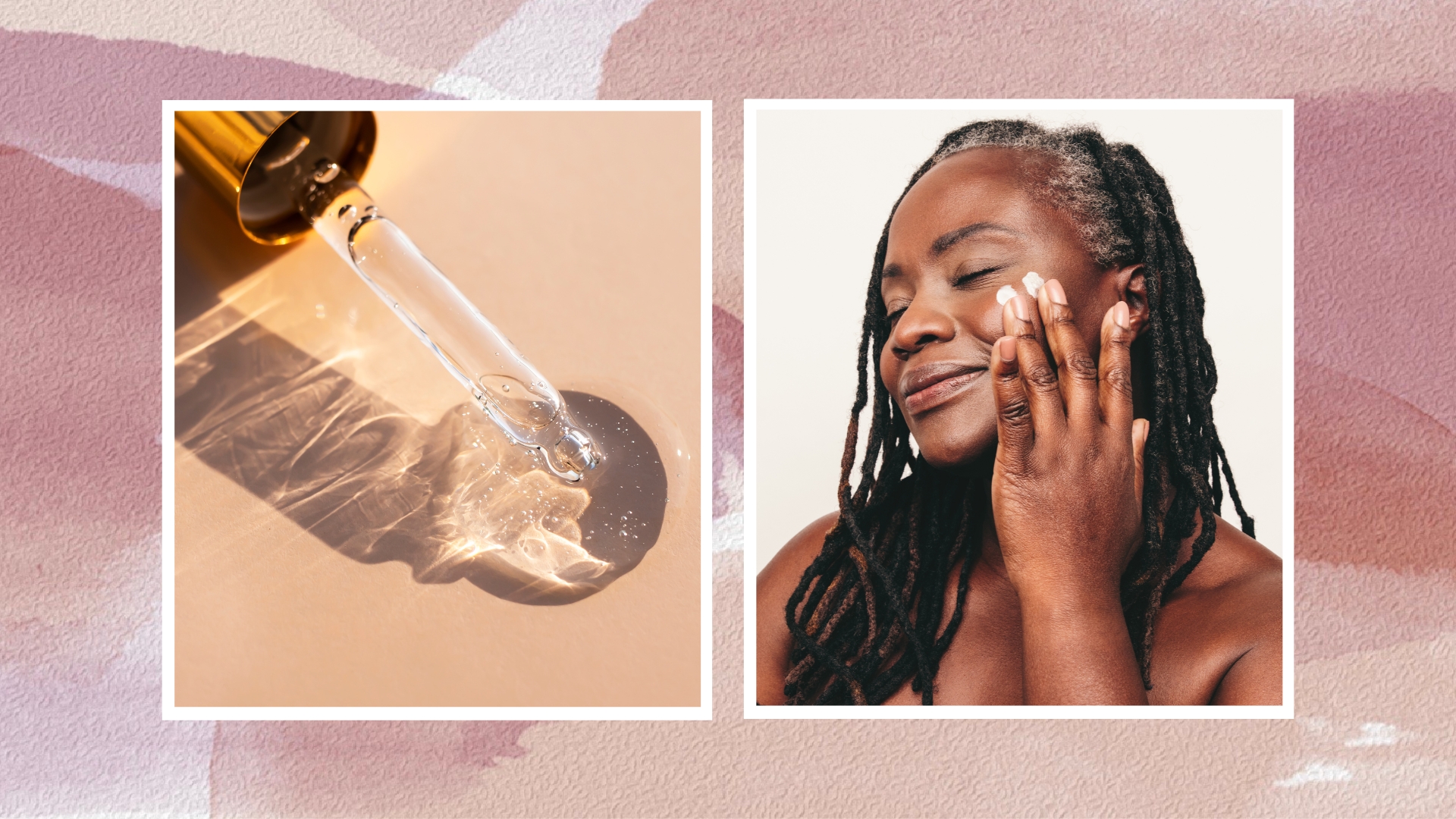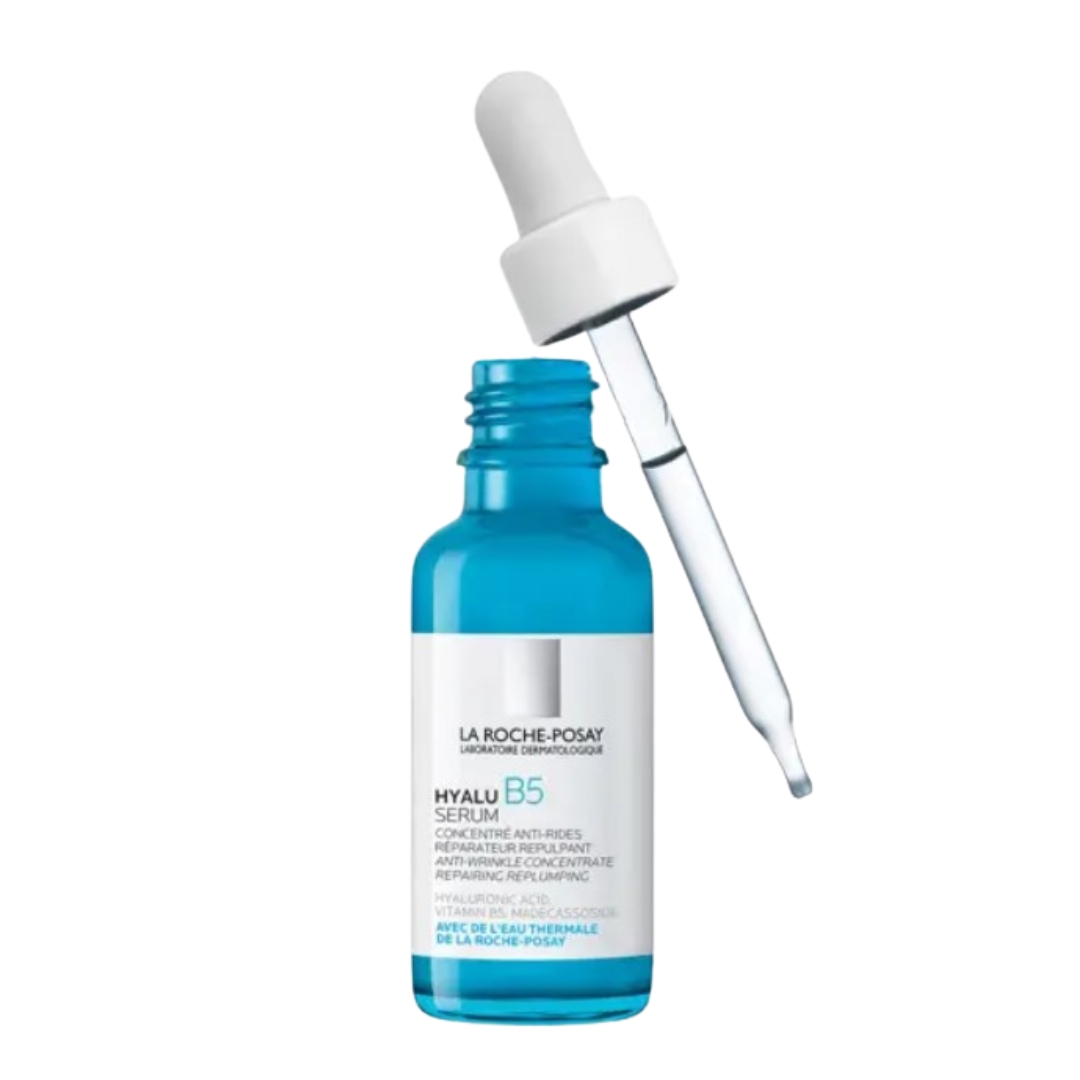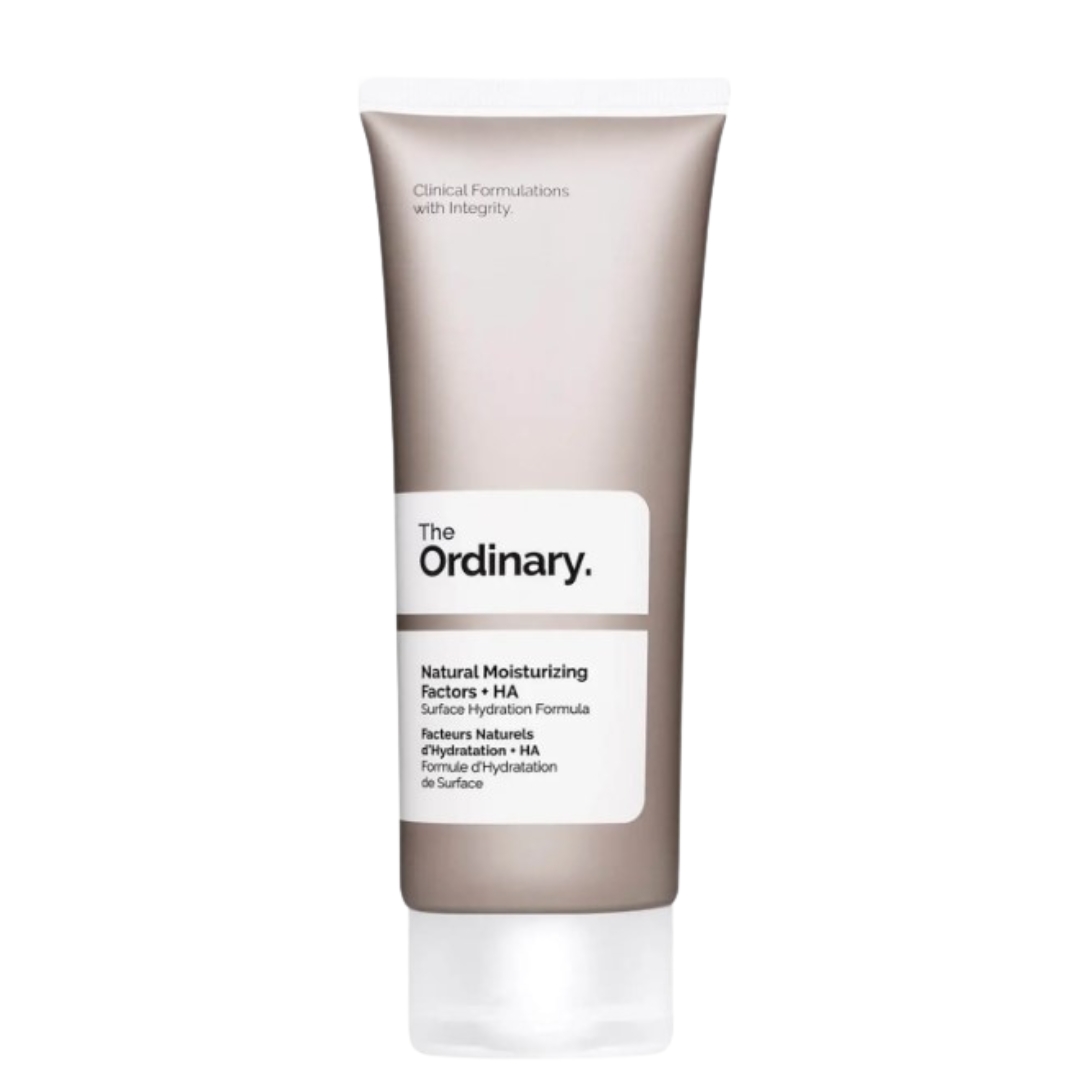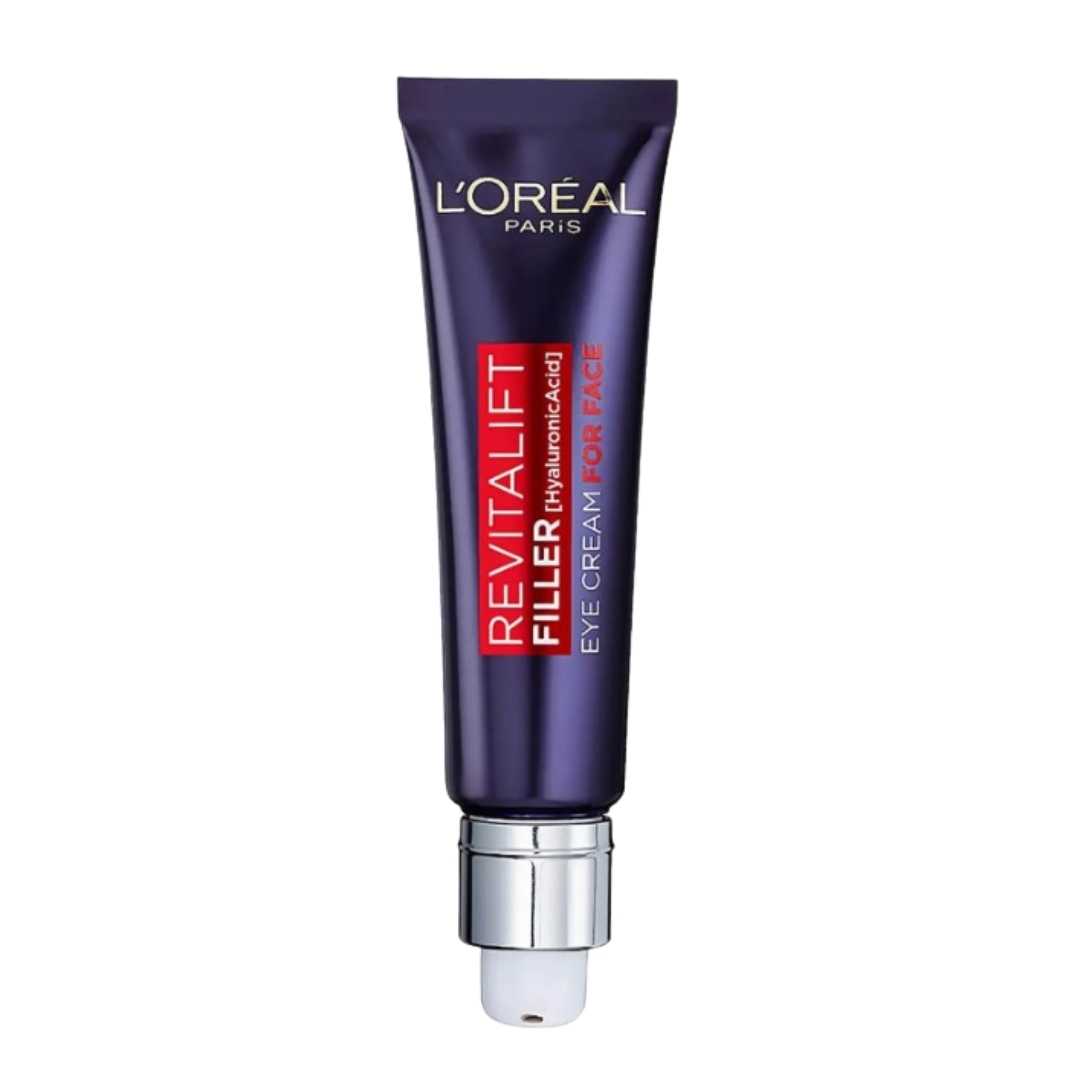
Hyaluronic acid is, at this point, one the worst-kept secrets in the beauty space for combatting dull and lacklustre skin - but can layering hyaluronic acid products push the benefits even further?
When it comes to building the perfect skincare routine, one of the most frequently asked questions is how to layer the many powerhouse ingredients together to achieve the best results for your complexion. Now, if you're seeking plumper and more radiant skin, you have undoubtedly added one of the best hyaluronic acid serums to your rotation, but if you need a hit of extra hydration, can adding an extra hyaluronic acid-infused step (or two) - for instance, with your best moisturiser - boost its effectiveness and absorption?
We've quizzed the experts on all things hyaluronic acid stacking, from whether you should use multiple HA products together to what skin types benefit most from the popular ingredient...
What is hyaluronic acid stacking?
"Hyaluronic acid stacking is a method of layering different hyaluronic acid skincare and also treatments to enhance the vitality, hydration, radiance and plumpness of your skin," explains Dr Amiee Vyas.
While often we tend to take the "less is more" approach with our beauty and skincare products, the idea here is to include hyaluronic acid more - in multiple steps of your routine, from your best eye cream to daily moisturiser, to supercharge your skin with hydration. But, is it actually okay to do so - and is it worth it or just a waste of money? We've asked the pros to dispel all the questions around hyaluronic acid layering...
Our team's top hyaluronic acid picks
Now before we dive into the intricacies of HA, we thought we'd share a few of our hyaluronic acid-infused staples - for those seeking glowy and healthy skin...

RRP: £45
With hyaluronic acid and vitamin B5, this serum (which is among the best La Roche-Posay products) works to instantly hydrate the skin, minimising the look of fine lines to leave the complexion plump and smooth.

RRP: £12.80
For those looking for a hyaluronic acid-infused moisturiser, this cream from The Ordinary is vegan and cruelty-free, with a concentrated infusion of amino acids, fatty acids and hyaluronic acids. It works to shield your outermost layer of skin, to leave the skin looking nourished and brighter.

RRP: £19.99
If your under-eyes are feeling dry and dull, a hyaluronic acid-rich eye cream can work wonders - like this one from L'Oréal Paris. This cream is specifically formulated for the delicate eye area and works to target the signs of ageing, minimising the look of fine lines and plumping the skin, for a fresh and radiant look.
Can you layer multiple hyaluronic acid products?
Now, let's dive straight into it - can you layer multiple hyaluronic acid products together?
The short answer is yes, as Dr Catriona Maybury, a Consultant Dermatologist at Dermatica notes: "Hyaluronic acid is a really well-tolerated skincare ingredient known for its ability to attract and retain moisture, keeping skin looking plump and hydrated. By layering HA products, you can enhance this hydrating effect as each layer attracts and retains more moisture leading to longer-lasting and more visible results."
Dr Maybury also notes that because it's gentle and non-irritating: "it’s a perfect ally for all skin types- from oily to dry, including those with sensitive skin. At Dermatica, we’ve designed our serum to work effectively with active ingredients in personalised formulas. So, when you layer our Dermatica hyaluronic acid serum under other HA-infused products, you're not only amplifying the hydration benefits but also ensuring that your skin receives a multi-level, deeply nourishing treatment, adaptable for every skin type. "
Dr Ifeoma Ejikeme also adds: "Hyaluronic acid stacking is generally safe and can be beneficial for maintaining skin hydration. By layering multiple HA products, you can potentially enhance the moisture-binding effects of hyaluronic acid and promote plump, hydrated skin." Dr Ejikeme does note though, that while you can layer multiple HA products in your routine, "it's essential to pay attention to the concentration and formulation of each product to avoid overwhelming the skin or experiencing product pilling."
Dr Maryam Zamani weighs in and states that, "often, we have multiple types of hyaluronic acid in various skin care products and it is absolutely acceptable and fine to use multiple products where hyaluronic acid is a skincare ingredient." But recommends having, "both low and high molecular weight hyaluronic acid. Low molecular weight hyaluronic acid is absorbed deeper, and high molecular weight hyaluronic acid sits more on top of the skin."
What skin types would benefit from hyaluronic acid layering?
- Skin types that would benefit: all but particularly sensitive, dry and ageing
"HA is a highly versatile skincare ingredient that benefits virtually all skin types," says Dr Maybury but notes that those with dry skin can particularly benefit from it, thanks to its ability to, "attract and retain moisture, providing long-lasting hydration while reducing the appearance of flakiness or tightness."
Ageing skin can also reap the rewards, "because it naturally loses moisture and elasticity over time. HA can help to plump it up, reducing the appearance of fine lines and wrinkles while improving the skin texture and elasticity," Maybury explains. Additionally, if you're looking to build a menopausal skincare routine, Dr Vyas says: "It is a great technique to use for patients who have drier skin, menopausal skin or eczema-prone skin," as it can help to lock in moisture.
Dr Zamani adds: "Hyaluronic acid is generally well-tolerated by most skin types, including sensitive, oily, and acne-prone skin. Its lightweight nature makes it suitable for a broad range of individuals seeking hydration without heaviness or greasiness."
What are the best ways to layer hyaluronic acid?
To incorporate hyaluronic acid stacking into your skincare routine, Dr Ejikeme says: "You can start by using a hyaluronic acid-based serum followed by a moisturiser containing hyaluronic acid. Look for products with varying molecular weights of hyaluronic acid to ensure deeper penetration and long-lasting hydration. Additionally, consider using a hydrating toner."
Dr Vyas seconds this and recommends starting with an HA serum (one that contains antioxidants) in the morning, followed by, "a hyaluronic acid-containing moisturiser which also contains ceramides," before finishing off with a hydrating sunscreen that - you guessed it - also contains HA.
"At Night you can add HA serum, a thicker hyaluronic acid-containing moisturiser and then depending on how dry the skin is, you could use a gel/cream mask overnight. Alternatively, finish off with a sheet mask for 15/20 mins. To be applied overnight, then use the remaining solution in the pouch and you will wake up with soft, hydrated, supple, plump, gorgeous skin."
Dr Vyas then reminds us that: "HA can be paired with retinol, peels, other acids and vitamins, and doesn’t contraindicate any treatments." So if you're looking to add one of the best retinol creams and serums to your routine, you don't have to forgo your hyaluronic acid serum to do so.
Dr Zamani adds that HA is often used in skincare combinations as, "its hydrating properties can enhance the effectiveness of other actives, such as antioxidants, peptides and retinoids."
That being said though, Zamani notes that "the formulation of the hyaluronic acid products you use is important. Some formulations may be thicker or have added ingredients and it's important to apply products from thinnest to thickest consistency for optimal absorption." Before adding, "The step really depends on the formulation. I recommend layering based on the texture of the skin, not the ingredient."
When to use hyaluronic acid?
When it comes to incorporating hyaluronic acid into your routine, Dr Maybury says: "In general, a good rule to follow is applying products from thinnest to thickest consistency. HA should come after you’ve cleansed the skin."
Here's a quick, step-by-step guide:
- Cleanser: Begin your routine with a cleanser, Maybury suggests Dermatica’s gentle squalane cream cleanser, " to remove impurities and prepare your skin for layering other products."
- Exfoliate: "If your routine includes exfoliation, do this before applying HA. Make sure exfoliation is limited to a few times a week to avoid irritation."
- Serum: Apply your HA serum (Maybury recommends Dermatica’s HA + Vit B5 serum) and "gently massage it into your skin to enhance absorption."
- Actives: "If you have other serums, especially those with active ingredients (like vitamin C or retinol), apply them after the HA serum," adding that the aforementioned Dermatica serum, " is formulated to work alongside effectively with these active ingredients."
- Moisturiser - containing ceramides: "Follow up with a nourishing ceramide and peptide moisturiser to help seal in the HA and the hydration it provides."
- Sunscreen: "In your morning routine, always finish with sunscreen. This is essential to protect your skin from UV damage and put this on last."







